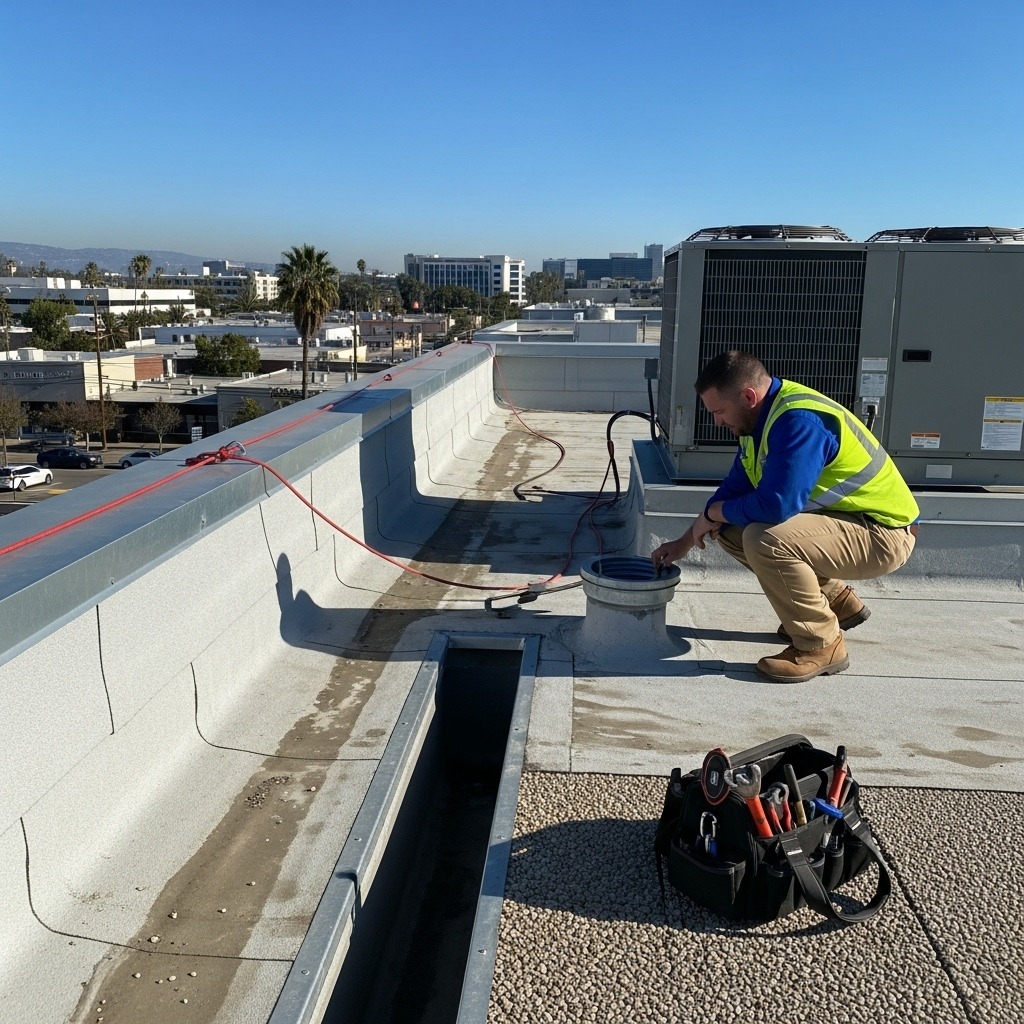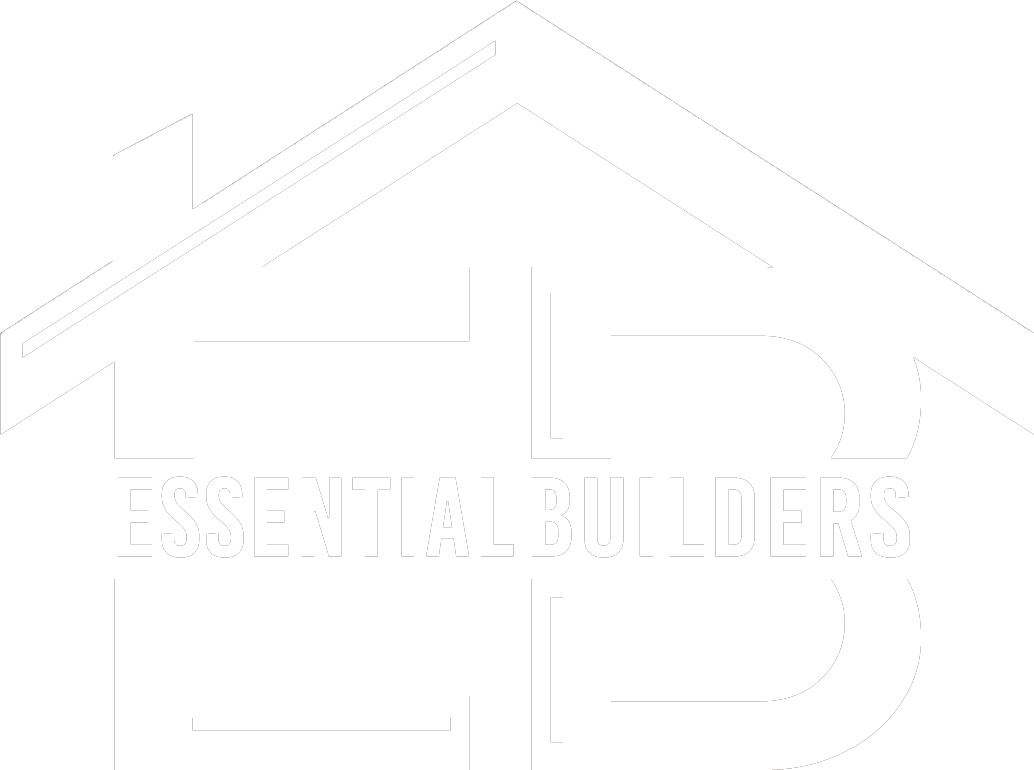Commercial Roof Inspections That Fit North Hollywood Buildings
From creative studios near Lankershim to small warehouses tucked just off Magnolia, commercial roofs in North Hollywood work hard behind the scenes. They support HVAC equipment, manage larger drainage areas than typical homes, and shelter inventory, gear, and people whose work depends on predictable environments. A commercial roof inspection is the discipline that keeps those systems honest. While building owners often ask about timelines and budgets, the most productive conversations focus on scope, documentation, and the specific demands of North Hollywood’s building stock and climate.
Commercial properties come in many forms here: single-story tilt-ups with expansive flat roofs, multi-tenant retail with parapet walls, older masonry structures with tar-and-gravel built-up roofing (BUR), and newer spaces with TPO, PVC, or modified bitumen membranes. Each has its own heartbeat. Before you schedule an inspection, it helps to revisit a concise explanation of what a professional roofing inspection entails, so your expectations match the realities of your building and the way a pro will methodically assess it.
What a Commercial Inspection Includes
Commercial inspections are about systems thinking. An experienced inspector will begin with the perimeter and elevation changes, noting the condition of parapet walls, coping, and counterflashing. They will examine penetrations such as HVAC curbs, exhaust vents, gas lines, and cable penetrations, where flashing details make or break performance. On single-ply membranes, they will evaluate welds, seams, terminations, and any patches made during past maintenance. On BUR systems, they will look for blistering, alligatoring, and evidence of past mopping. For modified bitumen, attention goes to laps and cap sheet wear. Drains, scuppers, and overflow provisions receive careful scrutiny because drainage is the lifeline of a low-slope commercial roof.
Safety and access planning shape the day. On larger buildings, inspectors may coordinate with property managers to control access, verify roof hatch safety, and ensure that equipment areas are de-energized if close inspection is required. Where anchor points exist, they use them. The goal is direct observation without compromising safety, building operations, or tenant schedules. A good inspector remains invisible to the business below while still capturing the information you need.
Why Local Context Matters for Businesses
North Hollywood’s climate asks a lot of commercial roofs. Summer heat and UV exposure stress single-ply membranes and accelerate sealant aging. Winter storms, though sporadic, test drainage systems that may be partially blocked by wind-blown debris or leaves. Santa Ana winds probe edge details and loose flashing. Add the vibration and foot traffic that come with HVAC service, and you get a clearer picture of why routine, professional eyes on the roof are essential. The inspector’s job is to see what daily operations and casual visits can’t, and to translate that into a maintenance plan your facilities team can execute.
Many buildings here have evolved over time. Tenant improvements introduce new penetrations; equipment upgrades change loading and vibration patterns. When roof work was piecemeal, incompatible materials may have touched, or patches may have solved yesterday’s leak while creating a weak point for tomorrow. A seasoned commercial inspector recognizes these histories at a glance and allocates time where it will uncover the most risk and opportunity.
Documentation That Facilities Teams Can Use
Commercial clients need more than a thumbs-up. They need a defensible record that serves operations, budgeting, and compliance. Expect a report with clear photos, annotations, and a site plan keyed to areas of concern. Recommendations are prioritized and often include maintenance tasks your building engineer can perform—like clearing drains or reseating loose drain bolts—alongside items that call for a qualified roofer. Where manufacturer warranties are in play, the inspector will align notes with those requirements, so you preserve coverage while addressing the roof’s needs.
Because a roof is a capital asset, documentation also supports long-term planning. A baseline inspection creates a starting point; future inspections measure progress and capture emerging risks early. For multi-tenant properties, this record becomes a communication tool for coordinating access windows and setting expectations with occupants when maintenance is scheduled.
Typical Risk Areas on North Hollywood Commercial Roofs
Drainage is the first among equals. A single clogged drain on an expansive low-slope roof can create ponding that magnifies UV damage, stresses seams, and increases the chance of leaks during a heavy storm. Inspectors will map ponding patterns, check for organic buildup, and verify that secondary overflow provisions exist and are functional. Edge securement is next. High winds will find loose terminations, compromised coping, or detached counterflashing, and they rarely stop there. Penetration flashings around HVAC curbs and vent stacks see foot traffic and maintenance work; inspectors check for compression damage, deteriorated sealants, and displaced metal.
Transitions between roof areas deserve attention. Where an original building meets an addition, membrane tie-ins may be points of weakness. Parapet corners are notorious for stress cracking. Around skylights, the condition of curbs and counterflashing determines whether that daylight source remains a benefit rather than a vulnerability. The inspection narrative connects these dots so your team can act with precision.
Coordination and Timing for Businesses
Commercial inspections should respect operations. Inspectors often schedule early to avoid peak hours for retail or to work alongside your HVAC contractor during planned service so any issues can be discussed in real time. If a drone is used to capture context or access hard-to-reach areas, coordination ensures it does not interfere with nearby operations. The idea is to minimize disruption while maximizing detail.
Mid-process, it is common for owners or facility managers to revisit the fundamentals of a roofing inspection as they prepare internal budgets and maintenance schedules. Clarity on scope and deliverables helps you align the report’s recommendations with your team’s capacity and the rhythms of your business calendar.
Why Proactive Commercial Inspections Pay Off
Proactive inspections are a form of risk management. They reduce the odds of downtime from leaks, protect interior finishes and equipment, and extend the usable life of your roof system. In North Hollywood, where many businesses operate in creative and production cycles, avoiding mid-project disruptions is more than convenience; it can protect deadlines and client commitments. A well-timed inspection also supports capital planning by distinguishing between maintenance that preserves performance and replacement scenarios that call for deeper discussion well ahead of time.
There is also a communication dividend. When tenants or stakeholders ask about the building’s roof, you can point to documented inspections, completed maintenance, and clear next steps. That confidence builds trust and makes conversations about access or temporary closures far easier.
Frequently Asked Questions
Q: How often should a commercial roof be inspected? A: Semiannual inspections are common—before the rainy season and after the harsher summer months. Buildings with heavy foot traffic on the roof or complex equipment arrays benefit from more frequent checks.
Q: Can inspections be done without interrupting tenants? A: Yes. Skilled inspectors coordinate timing, use roof hatches where available, and work around peak hours to remain largely invisible to occupants.
Q: What if our roof has multiple membrane types from past repairs? A: The report will note each system and the condition of tie-ins. Recommendations will address compatibility and detail where transitions need reinforcement or monitoring.
Q: Do inspections help with warranty compliance? A: They do. Documented maintenance and timely repairs often are conditions of warranty coverage. A thorough report supports those requirements.
Q: Are drones used for commercial inspections? A: When helpful and permitted, yes. Drones provide context and reach areas with limited safe footing, but close-up, hands-on observations remain essential for accurate findings.
Q: What should facilities staff do before the visit? A: Ensure access to roof hatches, provide any prior reports or leak logs, and coordinate with HVAC service if joint observations would be useful. Clearing debris from drains ahead of time can also improve the quality of observations.
Q: Will the report include a maintenance plan? A: It will include prioritized recommendations. Some teams request a separate maintenance schedule, which can be developed from the findings to guide quarterly tasks and annual reviews.
Schedule with intention and keep your building one step ahead of the weather. To align your team around expectations, review an overview of a professional roofing inspection and then book a visit that fits your operations calendar.
Protect your asset and your workflow. Connect with a North Hollywood commercial roofing specialist, coordinate a site-friendly appointment, and move forward with a clear plan. If you want a quick primer before you call, start with what a roofing inspection includes and then schedule your inspection.


